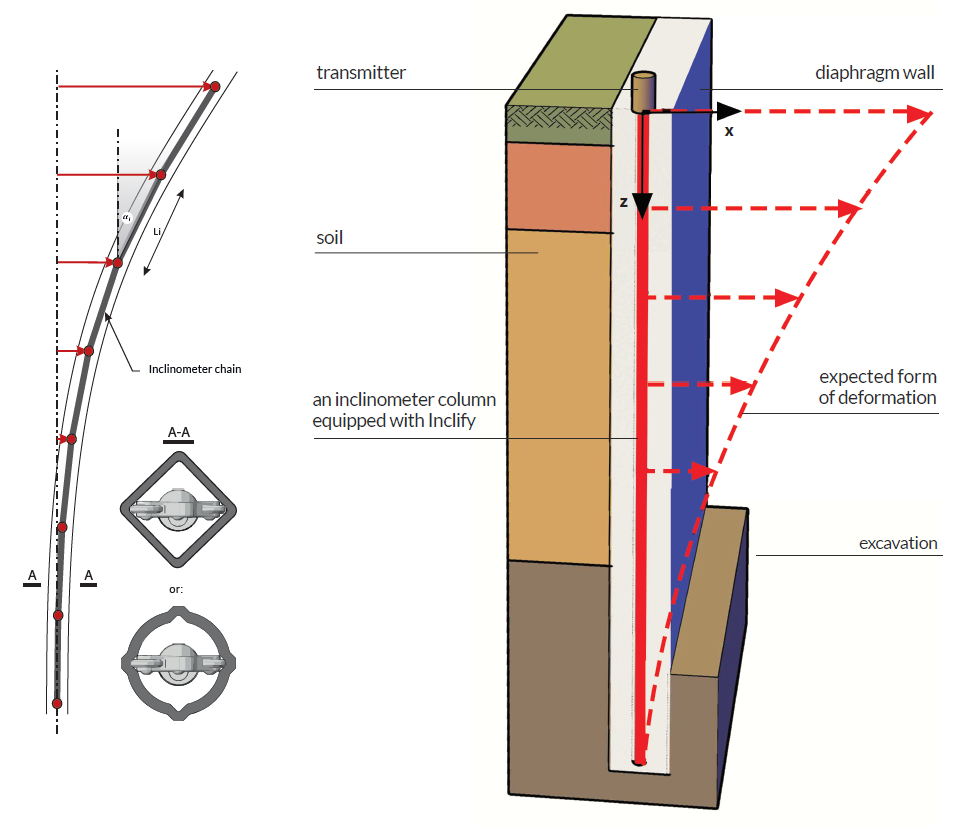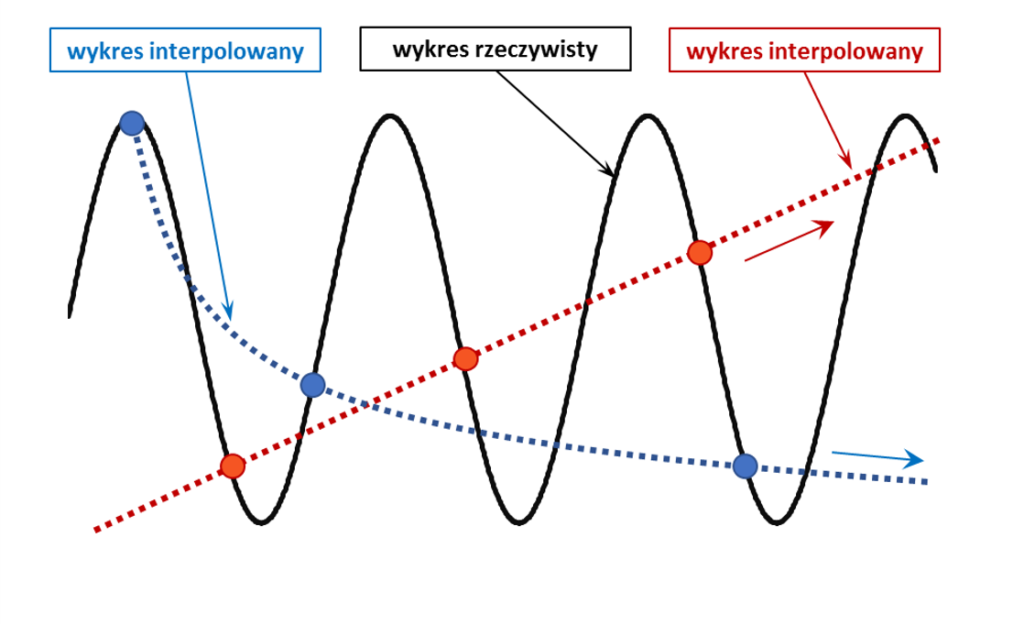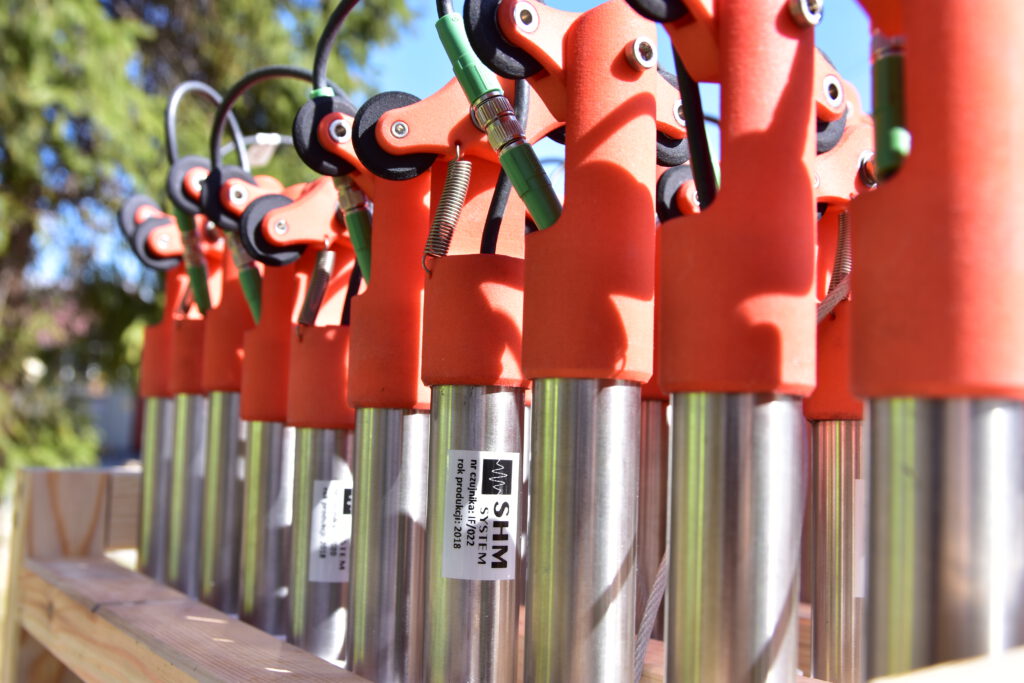Inclify – automatic and remote inclinometer system in the price of manual measurements!
The Inclify system is the first inclinometer system offering full automation and all associated benefits at the price of manual measurements. Analysis of slurry walls displacements or soil movements within landslide areas is done continuously over time with regard to alarm thresholds is now available with a simple subscription – without the costs of maintenance of measuring devices. It is a high-quality monitoring system equipped with automatic procedures for data processing and, above all, the possibility of early warning via SMS messages. Data are presented in real time 24/7 using an intuitive web platform offering graphs, tables, visualizations and other functionalities.
The Inclify service is based on shearing the results of displacement measurements from automatic inclinometer probes located in slurry walls, embankments or landslide areas. Depending on the project, it is possible to measure vertical or horizontal displacements. Installation and technical maintenance of the system is provided by our experts from Inclify team. The User receives only the information in a clear and useful form.
Advantages of automatic inclinometer monitoring:
- displacement measurements in one or two planes continuous over time;
- uninterrupted access to data in on-line form 24/7;
- automatic alerting via SMS after exceeding the thresholds;
- early warning system for immediate reaction (e.g. use of additional struts);
- forecasting the time of exceeding limit values (appropriate management of risk, schedule of construction works and costs).
The main aim of Inclify system is to control horizontal or vertical displacements, which are safety-critical values important for:
- protection of surrounding infrastructure against damage caused by construction works (in particular insufficient protection of deep excavations);
- supervise construction safety by taking appropriate remedial actions immediately;
- improvement of design and numerical models thanks to comparative analysis of theoretical predictions with the actual deformation state of the structure.




